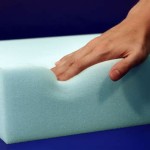How Often Should You Clean and Condition a Leather Sofa?
Leather furniture offers a blend of durability, comfort, and aesthetic appeal. Maintaining its quality and extending its lifespan, however, requires regular cleaning and conditioning. The frequency of these maintenance tasks depends on several factors, including the type of leather, the usage level, and the environmental conditions.
Understanding the specific type of leather on your sofa is crucial for determining the appropriate cleaning and conditioning regimen. Different leather types have varying levels of durability and sensitivity to cleaning products. Common types include finished leather, protected leather, aniline leather, semi-aniline leather, and pigmented leather. Finished leather, also known as top-grain leather, is the most durable and easiest to care for, while aniline and semi-aniline leathers are more delicate and prone to staining.
Usage frequency significantly impacts how often a leather sofa needs cleaning. A sofa in a high-traffic area, such as a family room, will require more frequent cleaning than one in a less-used space, like a formal living room. Homes with pets or children will also necessitate more regular cleaning due to increased exposure to dirt, spills, and oils.
Environmental factors, such as humidity and sunlight, also play a role in determining cleaning and conditioning frequency. Exposure to direct sunlight can cause leather to fade and dry out, requiring more frequent conditioning. Similarly, low humidity can lead to cracking, necessitating more regular moisturizing. Conversely, high humidity can encourage mold and mildew growth, requiring prompt cleaning and drying.
For general upkeep, light dusting with a soft, dry cloth or vacuuming with a brush attachment should be performed weekly. This removes surface dust and debris, preventing them from embedding in the leather. For regular cleaning, most leather sofas benefit from a gentle cleaning every two to three months. This involves using a leather cleaner specifically designed for the type of leather on your sofa. Always test the cleaner on an inconspicuous area first to ensure it doesn't damage or discolor the leather.
Conditioning is essential for maintaining leather’s suppleness and preventing cracking. It replenishes the natural oils that keep the leather hydrated and protected. Generally, conditioning is recommended every three to six months, depending on the factors mentioned earlier. In drier climates or with frequent use, more frequent conditioning may be necessary. Choose a high-quality leather conditioner that is compatible with your sofa's leather type.
Addressing spills and stains promptly is critical to preventing permanent damage. Blot spills immediately with a clean, dry cloth, avoiding rubbing, which can spread the stain. For water-based stains, allow the area to air dry naturally. For oil-based stains, sprinkle baking soda on the affected area to absorb the oil. Leave it for a few hours and then vacuum it up. Avoid using harsh chemicals or abrasive cleaners, which can damage the leather.
Deep cleaning is recommended once or twice a year, or as needed. This involves using a specialized leather cleaner and conditioner to thoroughly clean and moisturize the leather. Professional leather cleaning services can also be utilized for a more thorough cleaning and restoration. These professionals have the expertise and equipment to handle different leather types and address specific issues like deep stains and discoloration.
Protecting your leather sofa from direct sunlight and excessive heat can help prolong its lifespan. Using throws or blankets can also minimize wear and tear, especially in high-traffic areas. Rotating cushions regularly helps distribute wear evenly and prevent indentations. Addressing any minor damage, such as scratches or tears, promptly can prevent them from becoming larger problems.
By understanding the specific needs of your leather sofa and implementing a regular cleaning and conditioning routine, you can maintain its beauty and durability for years to come. Observing the leather’s condition and adjusting the frequency of cleaning and conditioning as needed will ensure it remains a comfortable and stylish addition to your home.
Choosing the right cleaning and conditioning products is essential for maintaining the health of your leather sofa. Always consult the manufacturer's recommendations or seek advice from a leather care specialist for specific product recommendations. Using inappropriate products can damage the leather, leading to discoloration, cracking, and premature aging.

Expert Leather Furniture Care Cleaning Conditioning Tips Centurion Services

The Best Way To Clean A Leather Sofa Hometalk

How To Clean A Leather Couch Best Way Condition And Furniture

The Best Way To Clean A Leather Sofa Hometalk

Tips For Conditioning Your Leather Couch

Leather Restoration Tips Revive Aging Honey

What Is The Best Way To Clean An Italian Leather Sofa Dirt2tidy
How To Remove The Smell Of A From Leather Couch Quora

Leather Food How To Soften And Condition

How To Clean A Leather Couch So It Looks Brand New








